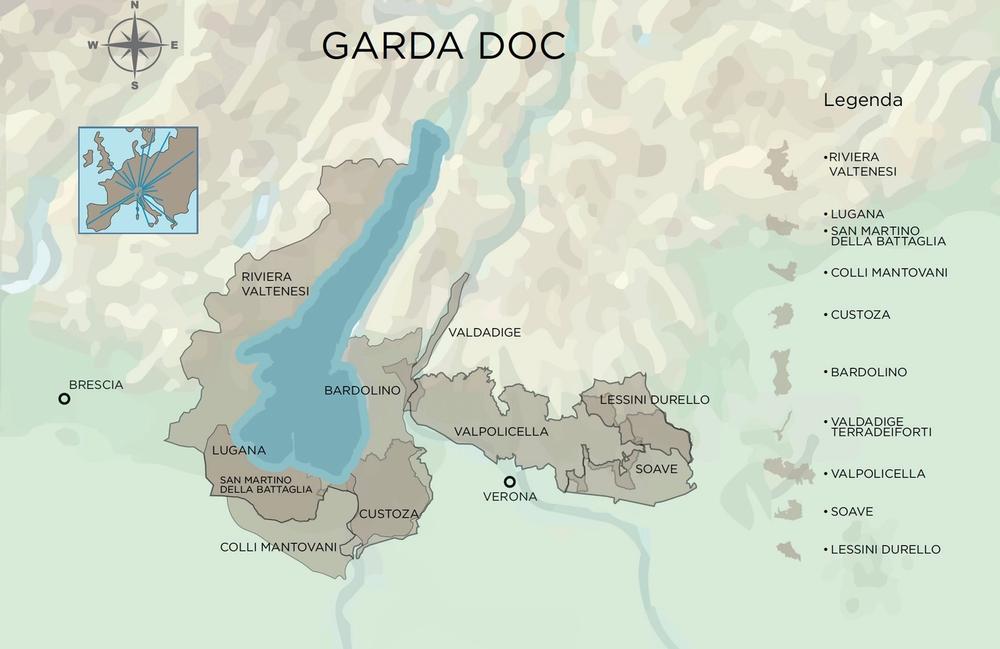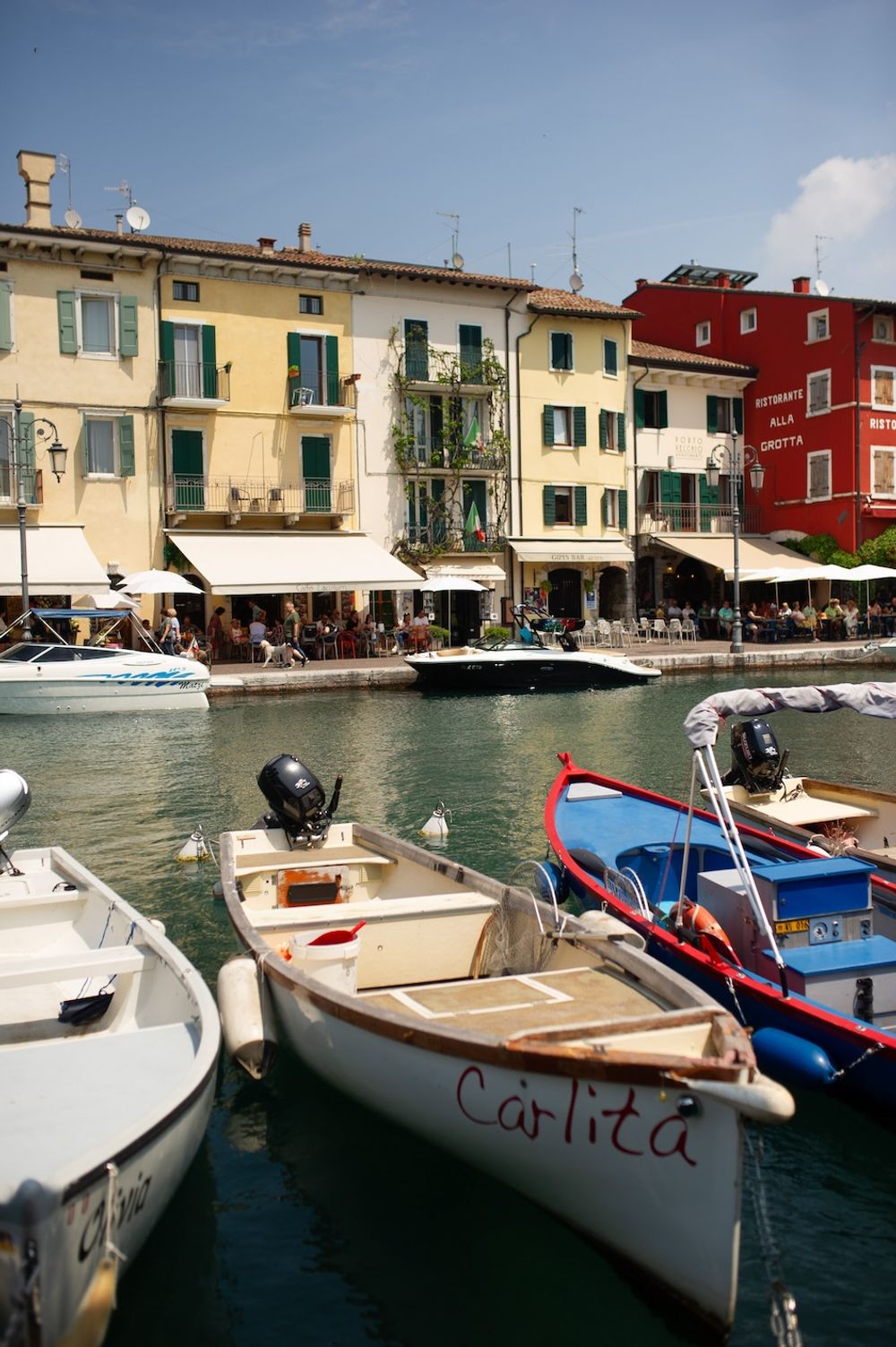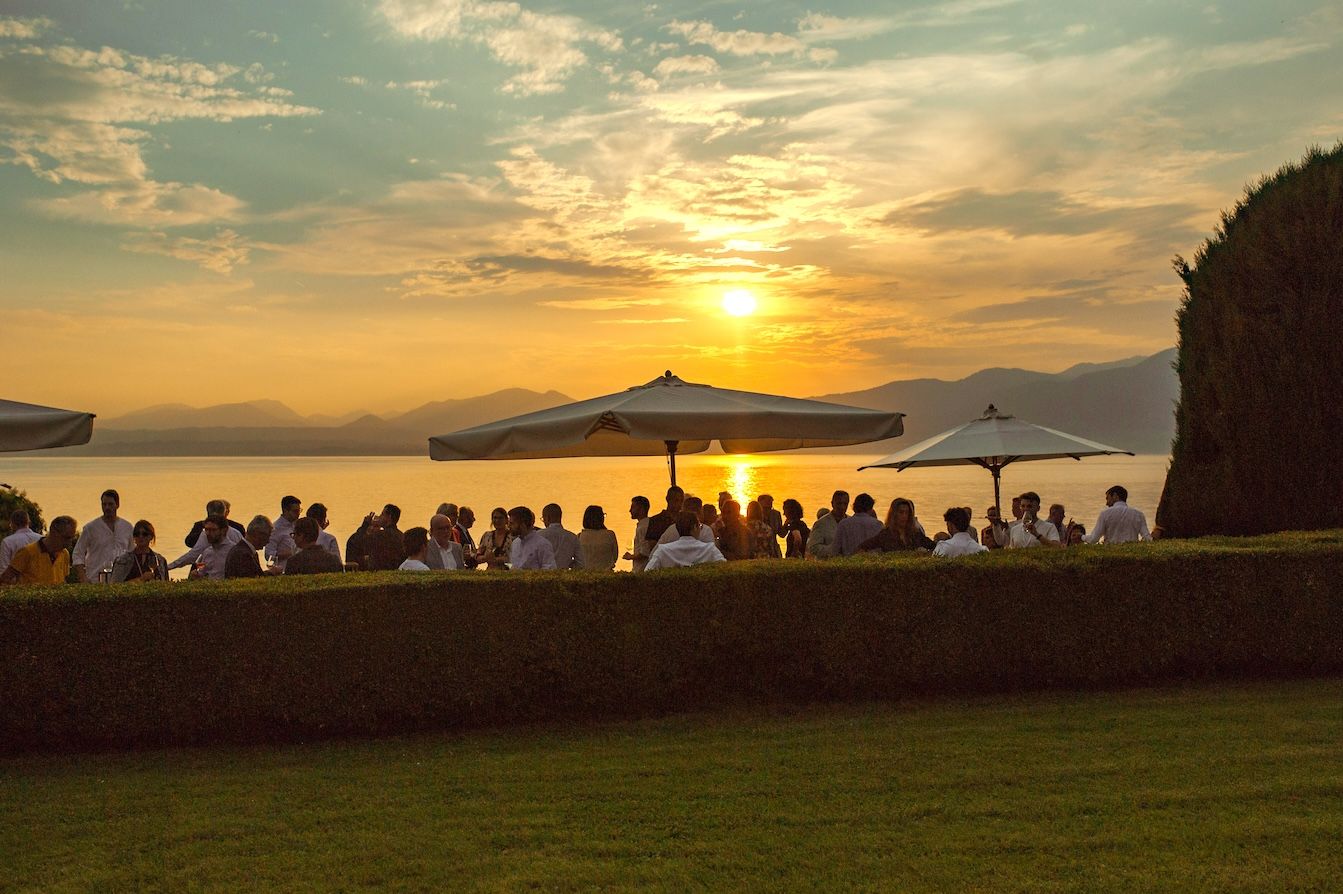Lake Garda is the biggest of the five great lakes of northern Italy: 370km2 of light-bouncing water that moderates the local climate and attracts 27 million visitors a year. Famous for its beautiful scenery, water sports, Roman ruins and Medieval villages, it is also home to one of the newest DOCs in Italy – Garda DOC – and an increasingly important wine industry.

Only 1.4% of production is super premium (€9+) while 80% is entry level.
Along with national and international journalists and Garda Consorzio producers, I attended the third Garda Wine Stories conference in Lazise on the shores of Lake Garda, held to discuss the results of a recent research project into the strengths and weaknesses of the appellation and to look at opportunities for its future.
Understanding the Garda DOC wine region
Since its creation in 2016, the number of producers in Garda DOC has increased by 20%, growing 46% more grapes.Today, Garda DOC’s output is 20 million bottles, and the target is 40 million. Punchy, but not unrealistic if you consider that the cultivated wine area is 2,000 ha when there are 30,000 ha available.
And let’s not forget that the DOC is piggy-backing on the brand of a world-renowned tourist region with a short, catchy name that is easy to pronounce (compared to, say, Trentino Alto-Adige or Friuli-Venezia Giulia).This is an important consideration,since 80% of Garda DOC wine production is exported and Italian nomenclature is fiendishly complicated.

Garda DOC spans the regions of Lombardy and Veneto (there are 20 regions in Italy), the provinces of Brescia, Mantova and Verona (three of the 107 provinces) and includes 31 communes (of the 7918 total). Coupled with this, Garda DOC vineyards also fall into zones which overlap with other ICT, DOC and DOCG zones such as the DOCGs of Bardolino and Soave, Bianco di Custoza and Amarone della Valpolicella.
Of the 10 historical appellations that make up Garda DOC,Bardolino, Valpolicella, Soave and Lugana are well known, but Colli Mantovani, Valdadige Terradeiforti and Riviera Valtenesiare not.
Garda DOC allows varietal labelling of the 13 permitted varieties in the DOC. Native and international, the main varieties are Gargegena, Trebbiano di Lugana, Corvina and Marzenino; Pinot Grigio, Chardonnay, Riesling, Cabernet Sauvignon and Merlot; production was 76% still white wine in 2023 (on the increase) and a small but increasing proportion of fizz, at the expense of still red wines which in 2023 made up only 7% of the total. Of the still white wines, 71% is either single, or bi-varietal and labelled as such. Appellation rules bestow DOC status to native varieties andallow the use of international varieties.
Before Garda DOC, local wines were sold under other DOC and ITG titles. Bardolino, Soave and Valpolicella became popular in their own right and were unwilling to give up their DOCs, so Garda DOC was launched alongside and overlapping them: a simplification and added complexity all at the same time.

70% of Garda DOC production comes from just four wineries
The benefit to producers of using the Garda DOC handle is the immediate and strong association the name has with a popular and beautiful part of the world. There are around 250 producer members of the Garda DOC consortium, but, at each vintage, producers can alternate between DOC labelling (bottling Chardonnay separately as Garda DOC or including it in a Soave DOC wine) ensuring that the Consortium maintains marketing momentum to promote the Garda brand to attract its members to use the brand.
The region’s problem, historically, has been the quality of the wine. Only 1.4% of production is super premium (€9+) while 80% is entry level. Some producers are still selling wine in the ‘extreme value’ category (less than €3). The Garda DOC Consortium is trying to increase the wine price and presence in the wine world, but, chicken and egg, the better wines will continue to be marketed under alternative classifications until the wines of Garda DOC are perceived to be better.

Lake Garda attracts 27 million tourists each year
With a wide variety of micro-climates and myriad of different soils, the Garda wines are also difficult to group together by style, and although small boutique wineries are on the increase, 70% of all production is the output of only 4 wineries, from the produce of approximately 2,500 wine growers.
Even so, the DOC must have a bright future, supported as it is by Consortium and government funds and the rock-solid Lake Garda brand. Adding wine tourism to the region and promoting Garda through its wines as well as its lake must surely be a golden opportunity.
































